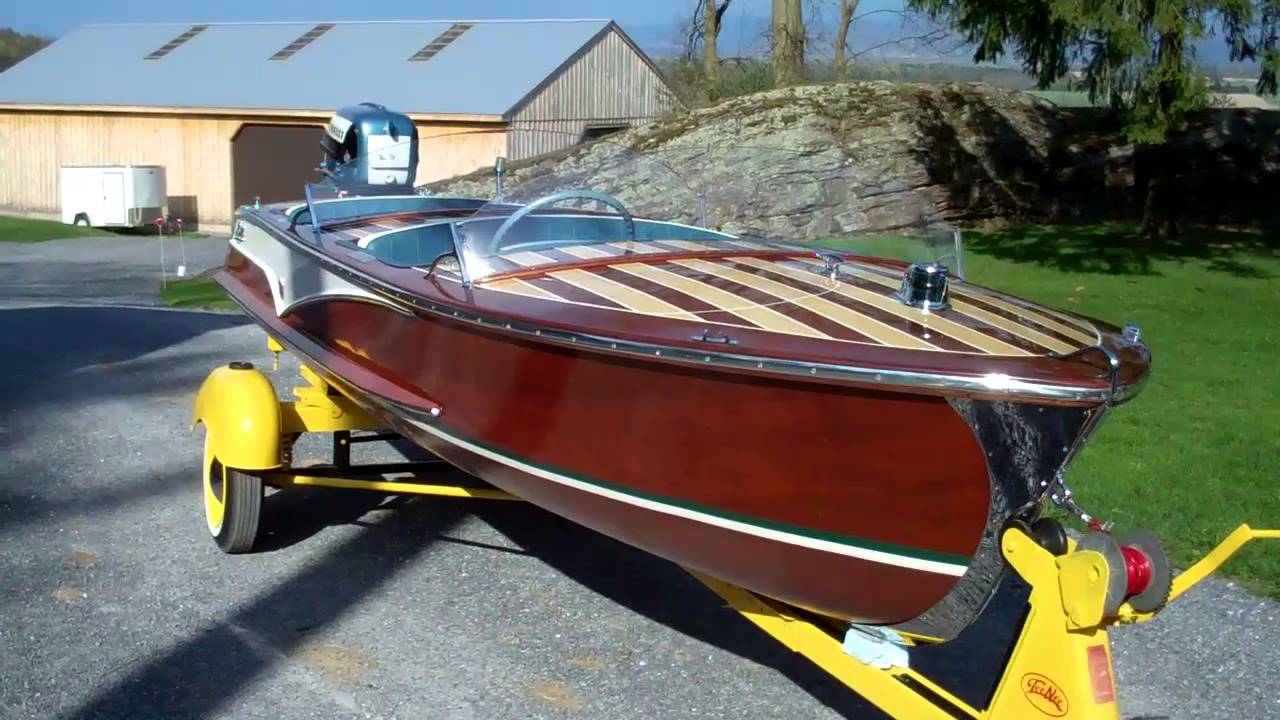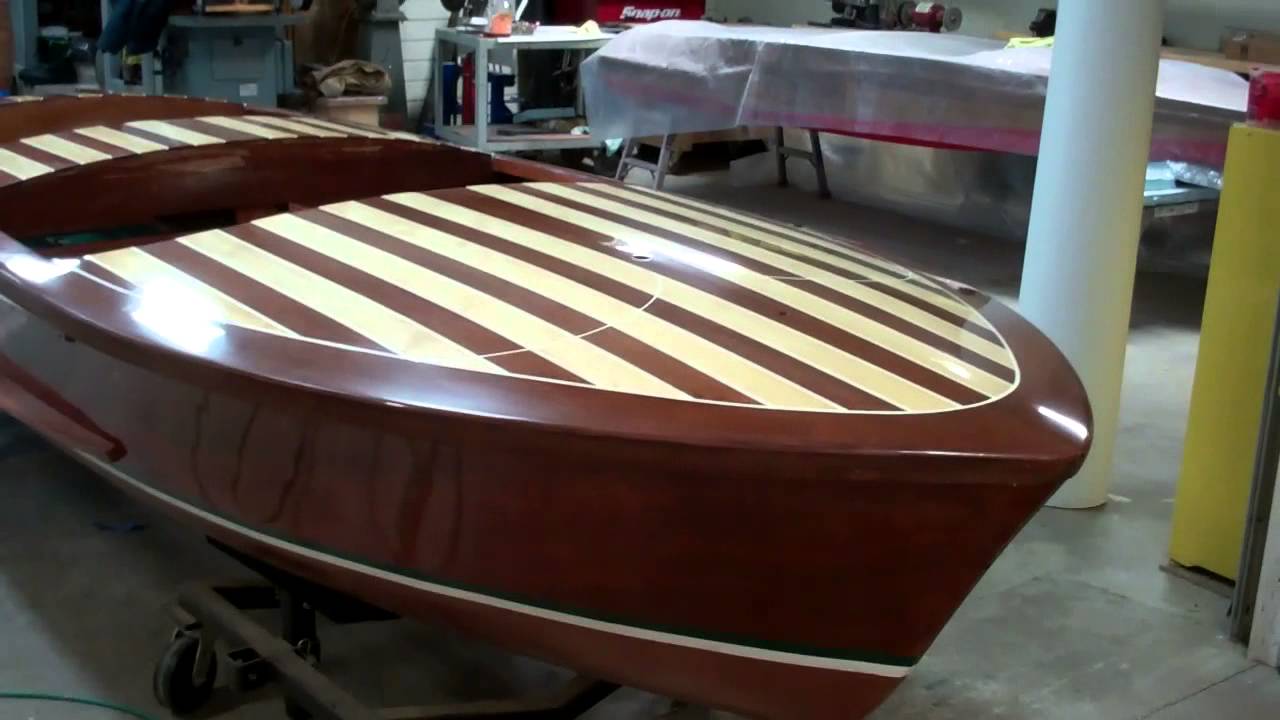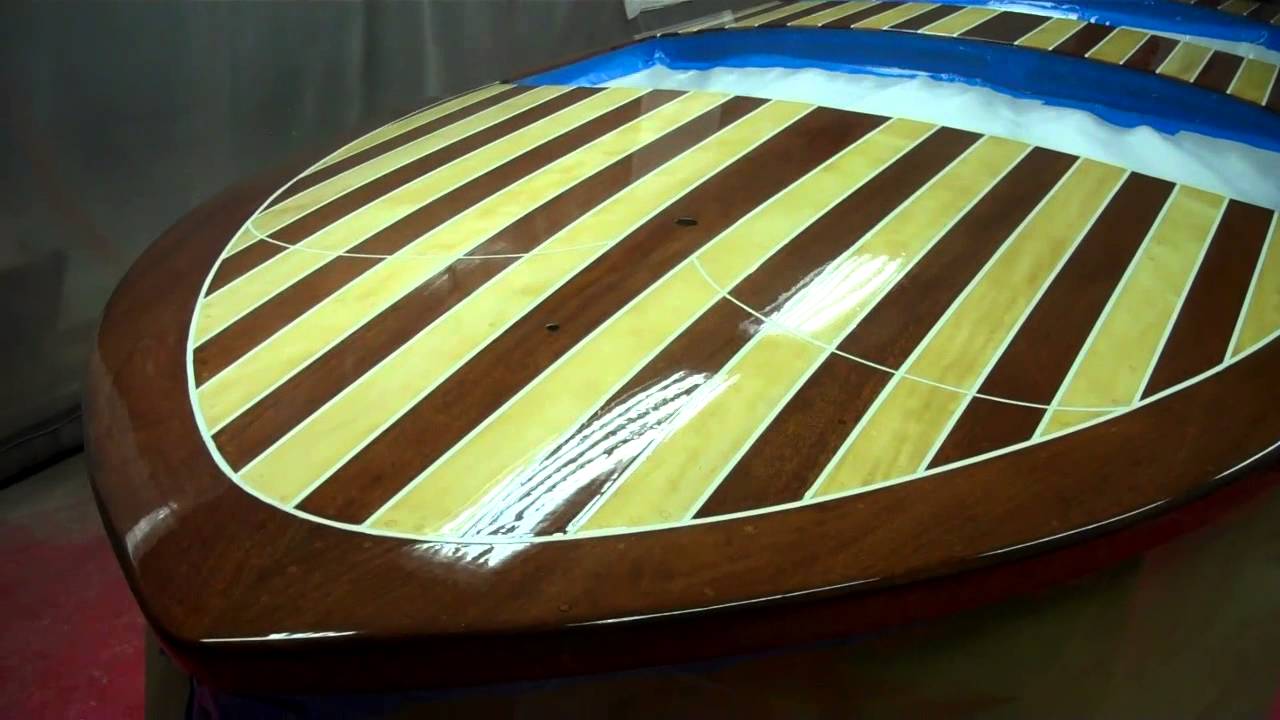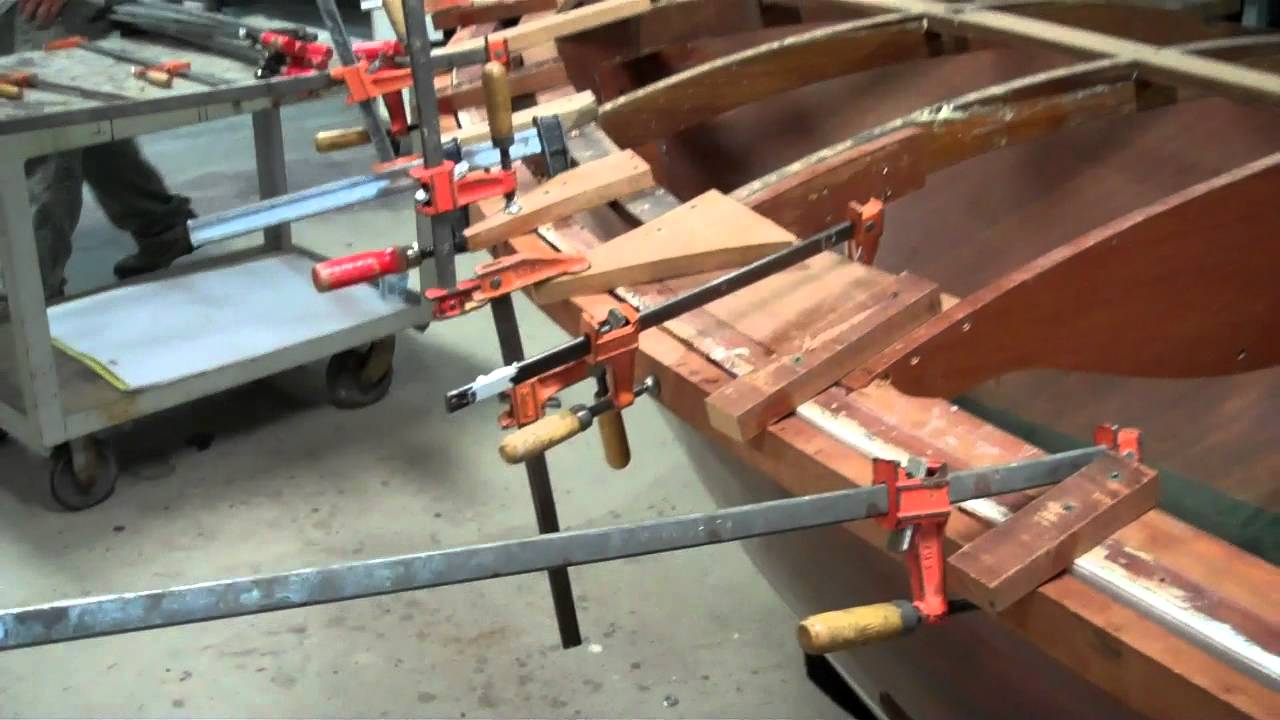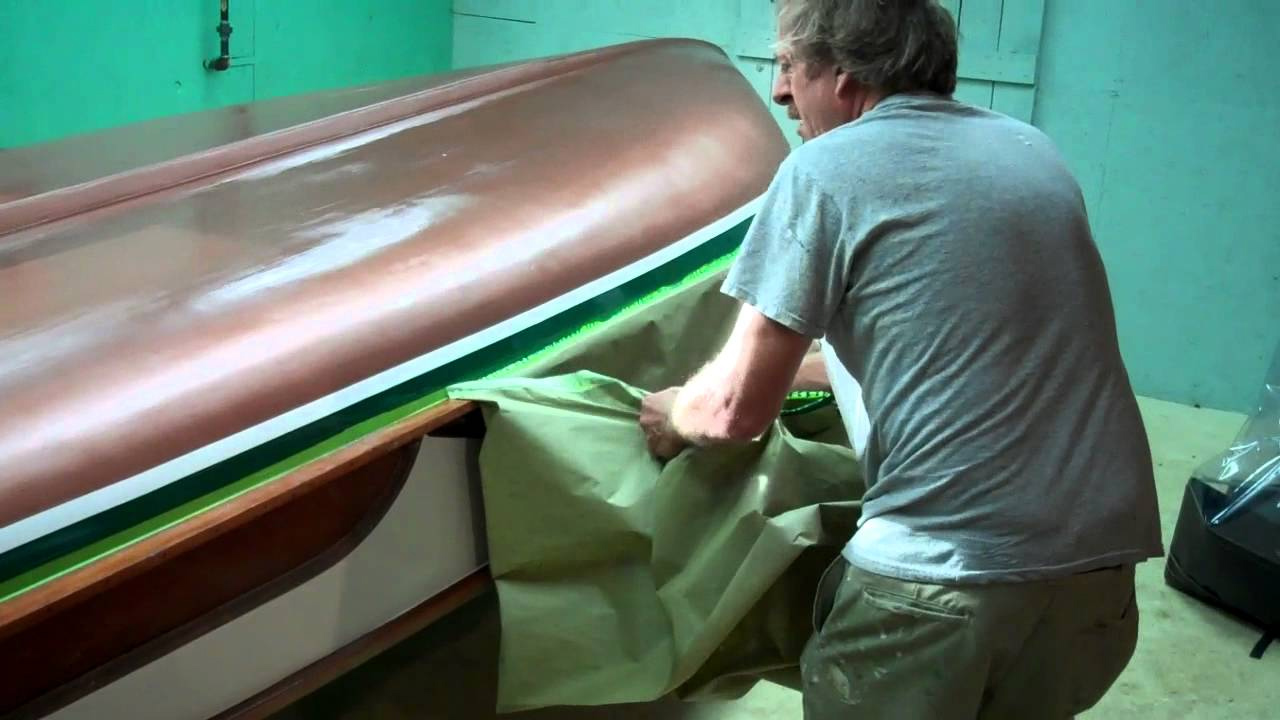Cadillac Marine & Boat Company of Cadillac, Michigan started in September 1953 as a wholly owned subsidiary of Wagemaker Company. Boat builder Wagemaker of Grand Rapids, Michigan also owned U.S. Molded Shapes, Inc. and Mr. Raymond O. Wagemaker was president of all three firms. The Cadillac Chamber of Commerce was instrumental in luring the boat firm to the city. Across town was a branch plant of Chris-Craft that opened up in 1941. Cadillac made aluminum fishing boats and runabouts. U.S. Molded Shapes made molded veneer boat hulls for Wagemaker which finished them and marketed the boats as Wagemaker Wolverine. Cadillac also made wooden boats with hulls from U.S. Molded Shapes. During 1958-1960, the Company designed and produced a small number of wood-hulled boats, and at the top of the line was the double-cockpit, “Model 505”. The Cadillac Seville. She is a 15′ molded plywood runabout powered by a special edition, 30 HP Evinrude outboard engine. We acquired this boat out of a barn in late 2010, and began actively preserving her in late 2011. That process was completed today, May 2, 2013, as she, perched on her 1959 Tee Nee tilt trailer, emerges from the Snake Mountain Boatworks’ preservation shop and moves into our showroom. She is hull number M5883, which tells us that she was the 83rd boat produced by Cadillac Marine and Boat Company in 1958. While the video’s narration suggests that she is the 83rd of 87 Cadillac Sevilles produced in 1958, further research informs us that, at a price of $1,245 FOB the plant in Cadillac, MI, very, very few orders were made for this then super-expensive little boat. So M5883 was the 83rd boat delivered by the company in 1958, but that included total production of mostly aluminum and very few molded plywood hulls. True to her name, Cadillac Seville, she is long on luxurious adornments, from her fantastic cutwater to her bold “Cadillac Seville” name plate. Even the floor-mounted shifter and throttle are unusual. Enjoy meeting this fantastic example of what was considered “haute design” for vehicles of all sorts in the late 1950’s.
1958 15′ Cadillac Seville – Preservation Nearing Completion
This 1958 Cadillac Seville is an early example of cold-molded plywood hull construction. She has two cockpits, complete with two windshields. Her deck planks alternate in mahogany and avodire, which produces a striking result. Now that all the structural and most of the cosmetic work has been completed, we can begin reconstructing her. Wait until you see her original Evinrude outboard with matching Evinrude blue upholstery her Caddy Seville crowns and chrome moldings!
1958 Cadillac Seville – Interlux Perfection Plus Two Coats
We are nearing completion of a thorough preservation of this early example of cold-molded plywood hull technolong. The 1955 Cadillac Seville sports double cockpits, complete with double windshields. Leveraging a deal they made with GM at the time, she also is adorned with gleaming Caddy chrome trim and the Caddy crown crest. Here we have just finished applying the second of an eventual seven coats of Interlux Perfection Plus varnish.
1958 Cadillac Seville – Rub Rail Steam Bending
The forward section of the port rubrail just could not be saved. Here you will view how the hull itself can serve as the pattern for steam bending a replacement. Once cured, the blank was shaped by hand to fit the ever-changing radius, one that is longer at the top than at the bottom of the rub rail.
1958 Cadillac Seville – Boot Stripe Exposed
The Cadillac Boat Company survived for only two years in the mid-1950s as an independent company before being bought out. During that time it cut deals with GM and Evinrude that led to creating and adding the Cadillac Seville, complete with all Caddy logos and trim, to its line. Here we are completing our preservation of the hull’s exterior below the gunwales as we expose the boot stripe.
How did we do?

